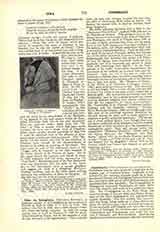

Cima da Conegliano, GIOVANNI BATTISTA, a Venetian painter, b. at Conegliano in the province of Treviso in 1459 or 1460; d. in 1517 or 1518. His father, who died in 1484, was a cloth-shearer (cimator), hence the family surname. In 1488 the young painter was at work at Vicenza; in 1492 he established himself at Venice, but by the summer of 1516 he had returned to his native place. Cima married twice, his first wife, Corona, bearing him two sons, the older of whom took Holy orders at Padua. By Joanna, his second wife, he had six children, three being daughters.
His oldest painting inscribed with a date is the “Madonna of the Arbor”, made in 1489, and now in the Museum of Vicenza. This picture is done in distemper and savors so much of the style of Bartolommeo Montagna, who lived at Vicenza from 1480, as to make it highly probable that Cima was his pupil. Even in this early production Cima gave evidence of the serious, calm, and almost passionless spirit that so eminently characterized him. Later he fell under the spell of the great Giovanni Bellini and became one of his ablest successors, forming a happy, if not indispensable link between this master and Titian. At first his figures were somewhat crude, but they gradually lost their harshness and gained in grace while still preserving their dignity. In the background of his facile, harmonious compositions the mountains of his country are invested with new importance. Cima was one of the first to assign the landscape a definite place in modern painting, and to formulate the laws of atmosphere and of the distribution of light and shade. His “Baptism of Christ”, in the church of S. Giovanni in Bragora (Venice, 1492), gives striking evidence of this. The coloring is rich and bright with a certain silvery tone peculiar to Cima, but which in his later works merges into a delicate gold. His conceptions are usually calm and undramatic, and he has painted scarcely any scenes (having depicted religious ones almost exclusively) that are not suggestive of “sante conversazioni”. His “Incredulity of St. Thomas” (National Gallery, London) and his beautiful “Nativity” (Venice, Santa Maria del Carmine, 1509) are hardly aught else. But most of his paintings represent Madonnas enthroned among the elect, and in these subjects he observes a gently animated symmetry. The grouping of these sainted figures, even though they may not have a definitely pious character, and the evident blissfulness of their existence give the impression of unspeakable peace. Such are, among others, the magnificent “Madonna Montinini” (about 1507) in the Parma Museum; the “Madonna with Four Saints” (about 1511) in the Berlin Museum, and the smaller “Virgin and Child Enthroned with St. John the Baptist and the Magdalen” (about 1513) in the Louvre, which was Cima’s last bequest as poet and landscape painter.
LOUIS GILLET

